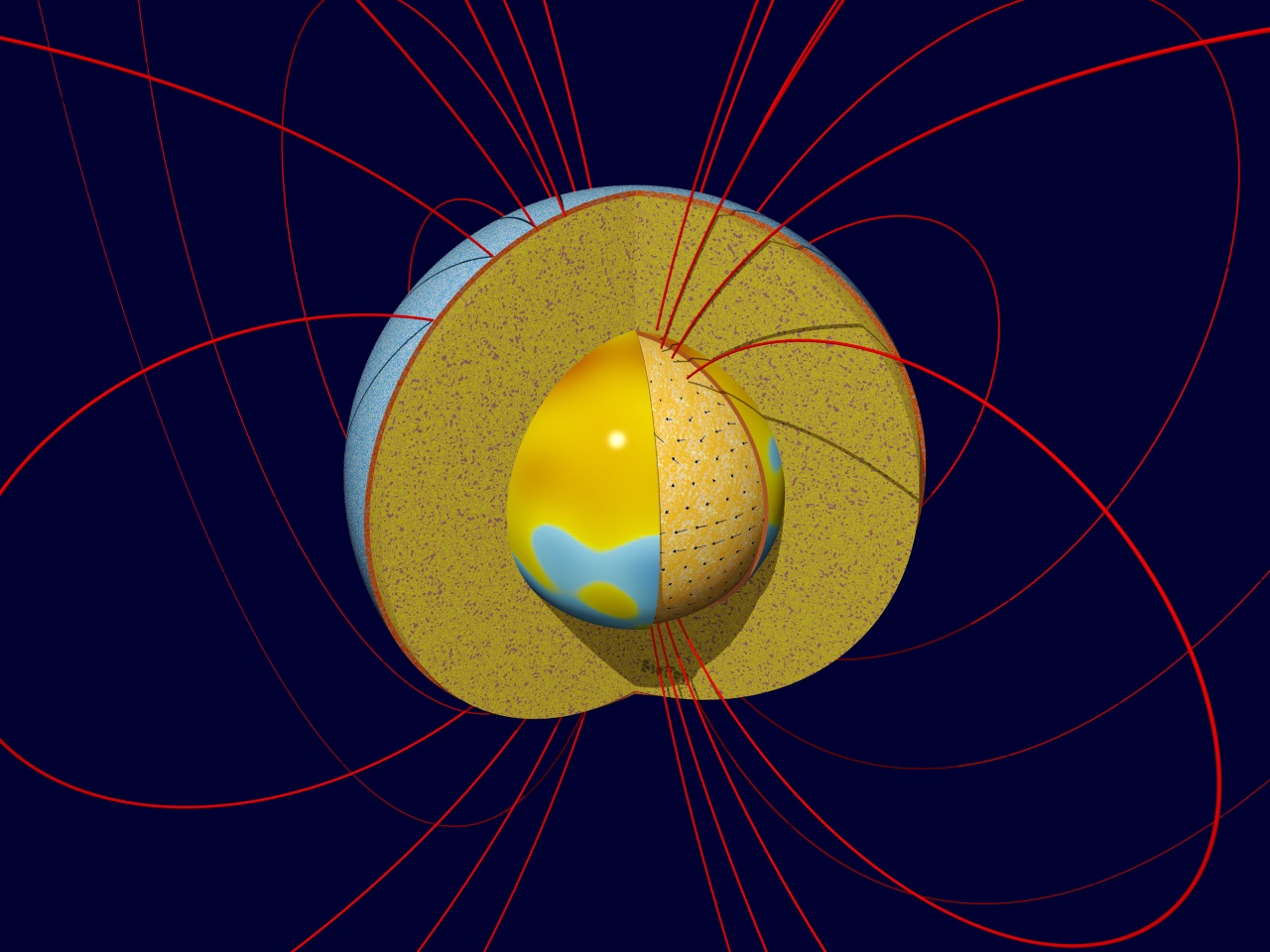About
The Earth's magnetic field has been in existence for the last 3 billion years or more. Generated in the Earth's fluid core (Figure 1), it provides a protective shield from solar radiation which would otherwise be harmful to life on Earth.

Yet this protective shield is far from constant in time, having undergone many reversals or huge variations in intensity over much of its life. It is fair to say that little is understood about the way these modulations occur, nor whether they are important for the evolution of life on Earth. Since Roman times the dipole component of the Earth, the largest ingredient, has decreased in intensity by more than a factor of two, and the historical record shows this trend to be continuing at the present day: a 10% drop has occurred in the last 150 years, meaning that the field is weaker now than it has been for the last 4000 years.
In recent years there have been great strides forward made in numerical models of magnetic field generation. This mechanism of self-creation and sustenance is called the dynamo mechanism.
Though very Earth-like, unfortunately these models remain in a parameter regime that is very unlike that applicable to planets. One way to bridge the gap is through the use of scaling laws, but this is a difficult research topic whose applicability may be difficult to justify.
There is a need for new methodologies that are in a regime that is more relevant to planets, and MFECE presents one attempt to develop such theories through a combination of experiment and theory. The unifying concept that we plan to develop is called magnetostrophic balance. Assuming that we are successful, the aim is to apply the magnetostrophic balance equations to the Earth's core by merging them with historical observations through a process known as data assimilation. This can leads to estimates of the interior properties of the core, and to better estimates of future behaviour of the magnetic field.